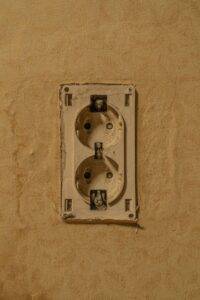The electricity flowing through your walls is a quiet, invisible force. It powers your morning coffee, lights up your family dinners, and charges the devices that connect you to the world. It’s a constant, reliable presence you probably don’t think much about until it’s gone. But that same power demands respect. An aging or overloaded electrical system can present a serious hazard, turning a source of comfort into a cause for concern.
That’s why having a solid checklist is so important. It gives you the power to spot issues and ensure safety before they become bigger troubles. With this guide, you’ll have a clear roadmap for checking the health of your home’s electrical system. You can move from room to room with confidence, knowing exactly what to look for.
Your Quick-Reference Electrical Safety List
Here is a rundown of the key points you’ll want to review around your home. We’ll break down some of the most important ones in more detail below.
- Feel outlets and switches for warmth.
- Inspect all cords for damage.
- Test your GFCI outlets monthly.
- Give your electrical panel a visual inspection.
- Pay attention to flickering lights.
- Test smoke and carbon monoxide detectors.
- Watch for warning signs from any home appliance.
- Make sure outlets are not overloaded.
- Check that you’re using the correct wattage bulbs in every light fixture.
Feeling for Warm Outlets and Switches
You go to unplug your vacuum, and the outlet cover feels warm to the touch. This is a red flag. An outlet or light switch should never feel hot. A little bit of warmth can point to a serious issue with the electrical wiring behind the wall.
This heat is a sign of resistance. The electricity is struggling to get through, which can happen with loose connections or an overloaded circuit. That excess energy turns into heat, creating a potential fire hazard. If you feel any warmth, it’s a good idea to stop using that outlet and have an electrician take a look.
A Close Look at Your Cords
Your device cords and any extension cords you use are the most exposed parts of your electrical system. Check them for any cracks, fraying, or pinches, especially where the cord meets the plug. A damaged cord exposes live electrical wiring, creating a risk for shock and fire.
Tucking an extension cord under a rug might seem like a neat solution, but it’s a hidden danger. Foot traffic can grind down the cord’s protective jacket over time. A cord needs to breathe; covering it can cause heat to build up, which is a significant fire safety concern.
Testing Your GFCI Outlets
You’ve seen those outlets with the “TEST” and “RESET” buttons. They are called Ground Fault Circuit Interrupters, or GFCIs. They are designed to protect you from severe electrical shock. You’ll find them in areas where electricity and water might come into contact, like your kitchen or bathroom.
Testing them is simple. Just press the “TEST” button. The “RESET” button should pop out, and whatever is plugged in should lose power. Then, press “RESET” to restore the power. Doing this once a month confirms this life-saving feature is working correctly. If it doesn’t trip or reset, that outlet needs to be replaced.
Don’t Overlook Your Electrical Panel
Your circuit breaker or fuse box is the heart of your home’s electrical system. Take a look at it once in a while. You shouldn’t see any rust or signs of moisture, which could point to a dangerous water issue. The panel’s accessibility is also important; it should never be blocked by shelves or storage.
Does a certain circuit breaker trip a lot? That’s a sign that you’re asking for too much power on that circuit. It could be a new home appliance in the kitchen or too many devices plugged into one room. While the breaker is doing its job by shutting off power, frequent tripping suggests it’s time for an inspection by a qualified electrical contractor.
Are Your Lights Flickering?
A light fixture that flickers every so often can be as simple as a loose bulb. But if your lighting seems to dim or flicker consistently, especially when a large appliance like an air conditioner kicks on, it could be a sign of a deeper issue. Persistent flickering can mean there’s a loose connection somewhere in your system or that the entire circuit is overloaded. It’s one of those subtle hints your house gives you that the electrical wiring may need some attention from residential electrical pros.
Smoke and Carbon Monoxide Detectors are Lifesavers
This is one of the most direct fire safety checks you can do. Every detector in your home has a test button. Press it and hold it. You should be greeted with a loud, piercing alarm. If you get silence or a weak chirp, change the batteries right away. Detectors themselves have an expiration date. Most need to be replaced every 10 years. An old detector just isn’t reliable. A functional detector provides an early warning, giving you precious time to get out of the house in the case of smoke or a fire.
Keep an Eye on Your Home Appliances
Your appliances work hard, from the microwave in your kitchen to the washer and dryer. Pay attention to how they operate. If you ever see a small spark when you plug a home appliance in, smell a strange plastic or electrical odor, or hear a persistent buzzing sound, unplug it immediately. These are all distress signals that could point to a fault in the appliance or the outlet it’s connected to.
Your Safety Is Our First Priority
Electrical safety is not something to take lightly. Even a small wiring issue can pose a real hazard. Omega Electric has built our reputation on a foundation of safety and reliability. We follow our own extensive electrical safety inspection checklists for every homeowner we visit. This helps us catch problems early and keep your home’s system in premium condition.
We proudly serve Montgomery County, Bucks County, Delaware County, Berks County, and Chester County, PA, and bring a commitment to safety to homes all across the region. If you have any concerns, need electrical repairs, or just want more info, give us a call!




